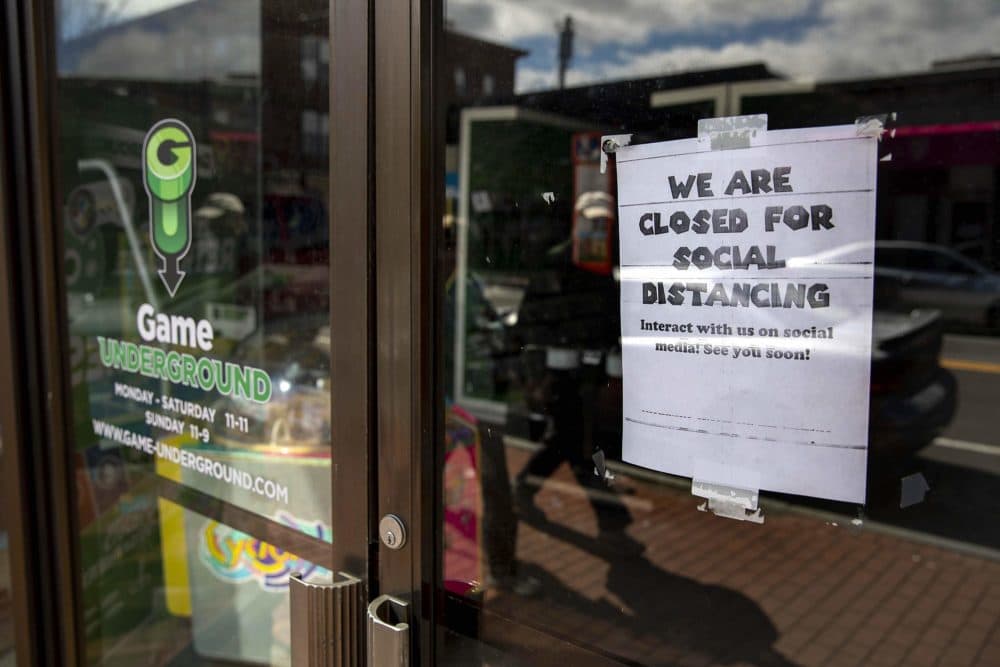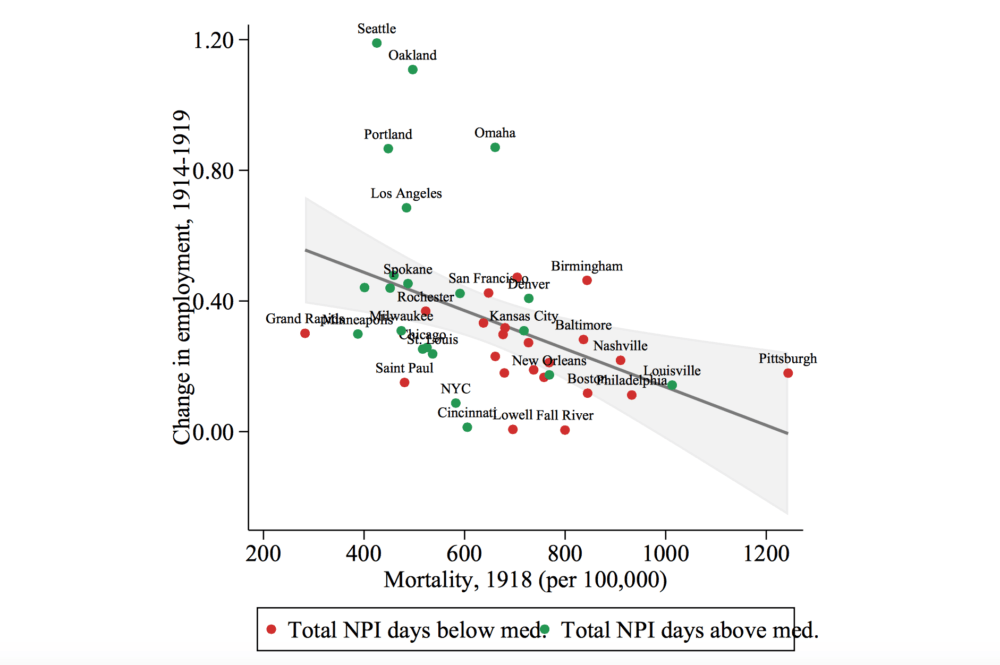Advertisement
Coronavirus Coverage
Aggressive Social Distancing Now Is Good For The Economy Later, Study Finds

Social distancing and other aggressive efforts to stop a pandemic will help the economy recover better after a public health crisis like the current coronavirus outbreak, a new study finds.
The study, co-authored by an MIT economist, examined data from the 1918 flu pandemic in the U.S. Researchers analyzed historical economic data, mortality rates and banking statistics as they sought to understand the economic impacts of the pandemic and the public health responses to it.
The 1918 flu did hit the U.S. economy hard, the study noted. For example, there was an 18% drop in manufacturing output through 1923, well after the last wave of the flu hit in 1919.
But the economic outcomes of the 1918 flu were very different in different cities, depending on their response to the pandemic. The study, which analyzed 43 cities, found that the areas that moved more aggressively to limit activities and physical interactions among the public had more economic growth following the 1918 pandemic.
The best-performing cities included Oakland, Omaha, Seattle and Portland, Oregon, which all enforced over 120 days of social distancing in 1918, the study found. The cities that struggled the most after the pandemic — Lowell, Philadelphia and St. Paul -- had less than 60 days of social distancing in 1918. The average length of social distancing policies for all cities was 88 days, according to researchers.
"Our findings suggest that reopening the local economy and lifting these restrictions too rapidly may actually be bad for the economy down the road," MIT professor and study co-author Emil Verner said. "And the reason is that lifting these restrictions too early could lead to a resurgence in the spread of the disease, and that would be even more destructive for the economy."
According to the study, cities that implemented social distancing and other public health interventions just 10 days earlier than other cities had a 5% relative increase in manufacturing employment after the pandemic ended through 1923. The study also found that an extra 50 days of social distancing was worth a 6.5% increase in manufacturing employment in a given city.
Advertisement
The banking industry also took a hit during the 1918 flu pandemic. Researchers found that Boston, Albany, Birmingham and Syracuse — which each observed less than 60 days of social distancing — struggled more than other cities in the country.

The coronavirus outbreak has already had major economic impacts — businesses have closed, people have lost their jobs and even essential services have experienced declines.
The new pandemic has also raised some questions about the economic impact of the efforts to stop the spread of the illness.
But Verner said his research casts doubt on the idea that cities must choose between opening up the economy and social distancing policies because "we're not going to have a normal economy during the pandemic."
"Smart public health interventions not only are going to reduce the number of people who get sick and reduce mortality from the coronavirus, they're also the key to restoring healthy functioning of the economy — because the economy isn't going to go back to normal until we've defeated the disease," Verner said.
The study comes as Gov. Charlie Baker extended an order closing all non-essential businesses in the state until at least May 4. Baker also extended the 10-person limit on gatherings and an advisory to stay at home. Schools also remain closed until May.
Verner and his fellow researchers acknowledge that the economy has changed a lot since 1918, with less manufacturing and more service jobs. The new coronavirus also has different characteristics than the 1918 flu, Verner said.
Still, Verner believes there are lessons that can be learned from the 1918 flu pandemic and applied to the handling of the current coronavirus outbreak.
The study has been published as a working paper and has not yet been peer reviewed by experts in the field.
